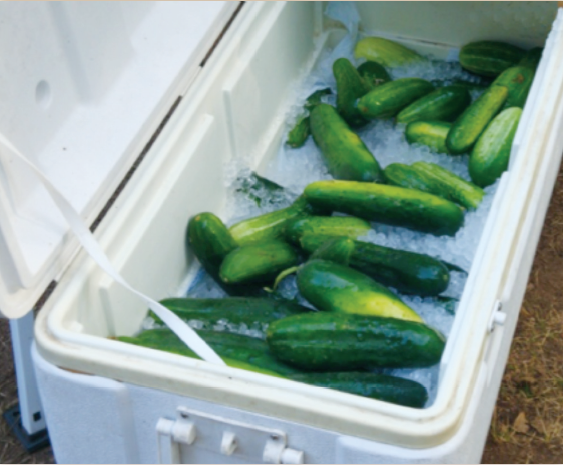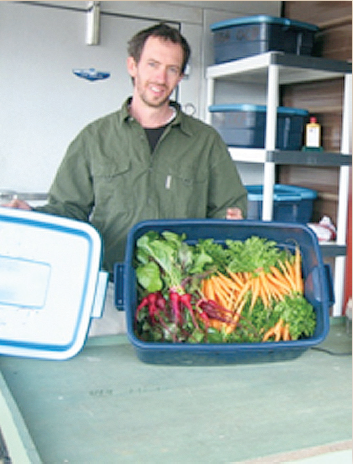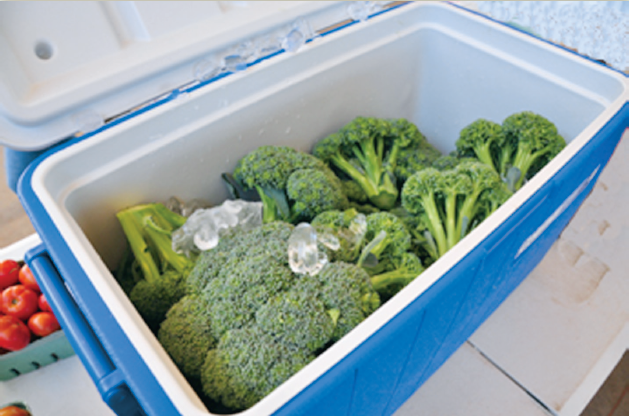Enhancing The Safety of Locally Grown Produce: Transporting Produce Safely
ID
FST-43NP (FST-340NP)
Getting fresh produce from the field to the market is another step where care must be taken to keep the product safe. It is important to prevent contamination of the produce with microorganisms that could cause foodborne illness and also to hold the produce under conditions that minimize the growth of harmful bacteria.
Steps to prevent contamination
- Use trucks or vehicles that have not been used to carry animals, raw manure, harmful chemicals or other contaminants, if possible.
- If you must use vehicles that carried animals, manure or harmful chemicals, then thoroughly wash, rinse and sanitize them before use with produce or other foods.
- Pack produce in covered containers to prevent contamination. Label produce in such a way that it can be traced to the specific area where it was grown and processed.
- Containers used to transport produce to market should be clean and sanitized. Food grade plastic containers are ideal. If using cardboard boxes, use only clean ones and use them only once. If using wooden bins or baskets, line them with a material like foil or paper towels that can be discarded after each use or with clean dish towels or fabric that are laundered between uses.
- Pack produce carefully to prevent physical damage like bruises or cuts. Damaged areas can be entry points for microorganisms that cause disease or hasten spoilage.
- Ice used in the transport of produce should be made of water suitable for drinking or that has been tested to ensure that no detectable generic E. coli are present and should be handled in a sanitary manner.
- Another option for cooling is freezer gel packs. Clean after each use and inspect for leakage.


Steps to minimize growth of harmful microorganisms
- Keep produce refrigerated or cooled to preserve best quality and to slow the growth of harmful bacteria.
- Transport products, especially leafy greens and shelled beans or peas, in clean and sanitized coolers with ice.
- If you have a refrigerated truck or trailer or a refrigeration unit, perform regular maintenance and check the temperature at least daily to ensure it is working properly.


This project was supported all, or in part, by a grant from the National Institute of Food and Agriculture, United States Department of Agriculture (Award Number 2009-51110-20161) and the Food Safety Outreach Program [grant no. 2016 0020-25888/project accession no. 1010671] from the USDA National Institute of Food and Agriculture.
Publication #FDNS-E-168-9, 2nd Edition. J.A. Harrison, J.W. Gaskin, M.A. Harrison, J. Cannon, R. Boyer, G. Zehnder and K. Woods.
The University of Georgia and Ft. Valley State University, the U.S. Department of Agriculture and counties of the state cooperating. Cooperative Extension, the University of Georgia Colleges of Agricultural and Environmental Sciences and Family and Consumer Sciences, offers educational programs, assistance and materials to all people without regard to race, color, national origin, age, gender or disability. An Equal Opportunity Employer/Affirmative Action Organization, Committed to a Diverse Work Force.

Virginia Cooperative Extension materials are available for public use, reprint, or citation without further permission, provided the use includes credit to the author and to Virginia Cooperative Extension, Virginia Tech, and Virginia State University.
Virginia Cooperative Extension is a partnership of Virginia Tech, Virginia State University, the U.S. Department of Agriculture, and local governments. Its programs and employment are open to all, regardless of age, color, disability, sex (including pregnancy), gender, gender identity, gender expression, genetic information, ethnicity or national origin, political affiliation, race, religion, sexual orientation, or military status, or any other basis protected by law.
Publication Date
January 15, 2025



